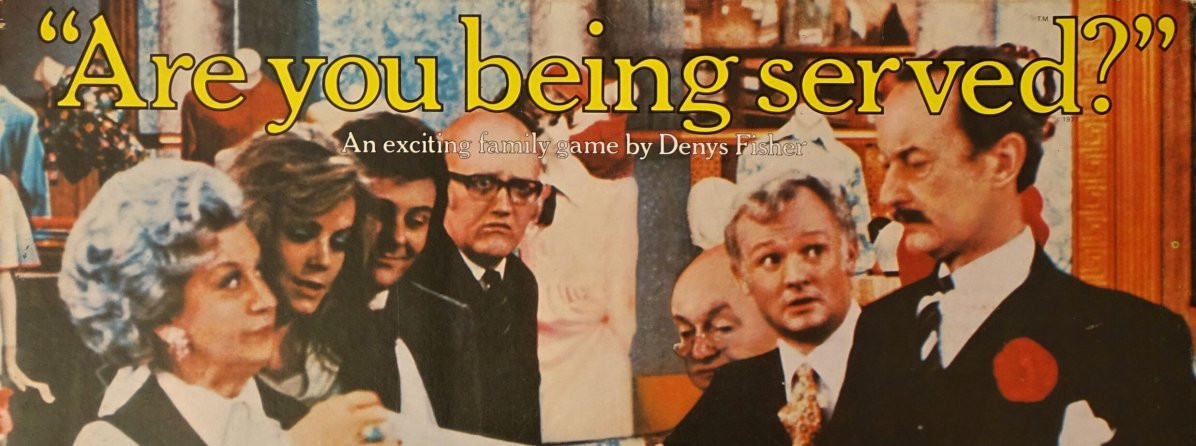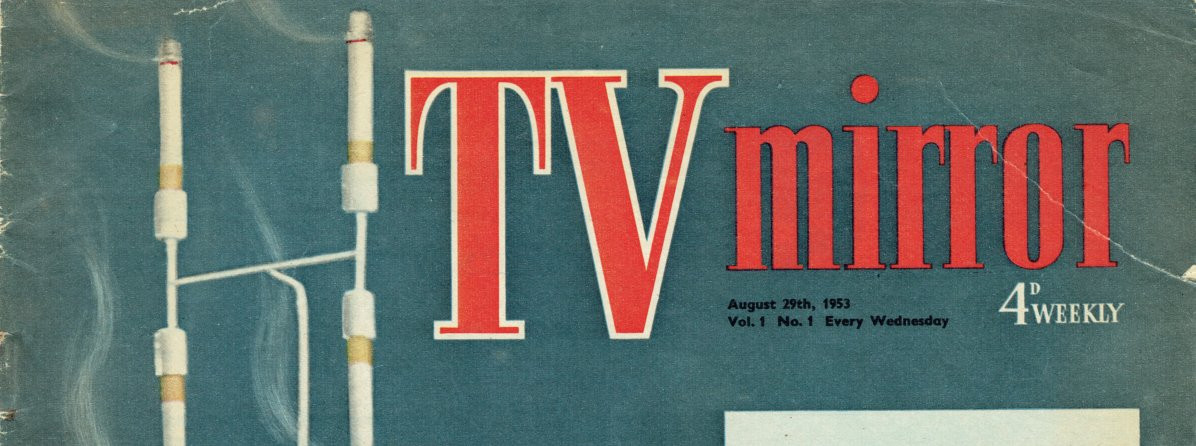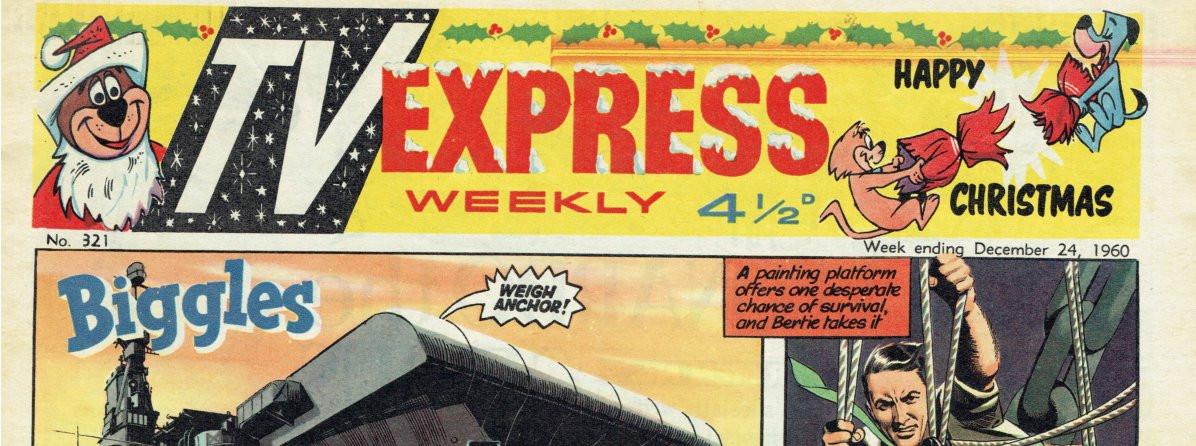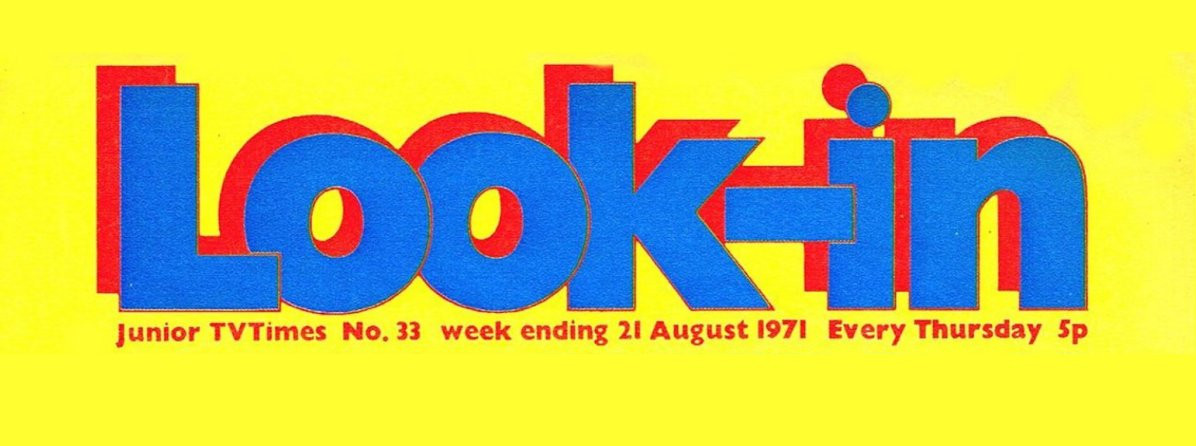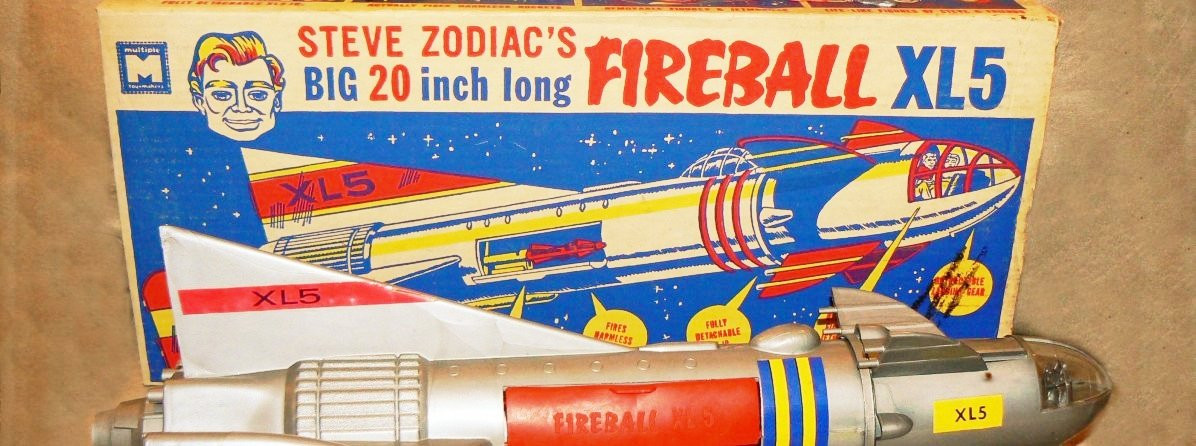
TV Tie-Ins: Disney to Daleks and Beyond
As television programmes became popular, so more and more TV tie-in toys were manufactured
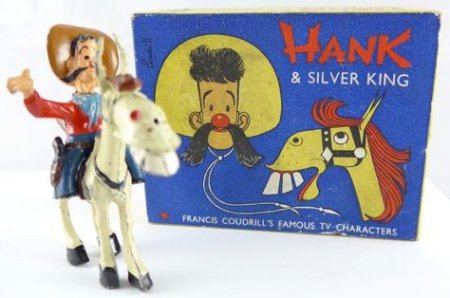
Television toy merchandise, which didn't exist in the UK until the 1950s, now makes a considerable contribution to the children's toys industry which is worth an estimate £16 billion. The rapid rise of TV-tie-in toys demonstrated how the industry quickly responded to a change in the cultural landscape once television became established. As the new medium grew in popularity, so did the manufacturing of toys based on popular TV shows and characters.
In 1930, Charlotte Clark was commissioned by Walt Disney to create the first stuffed Mickey Mouse doll which instantly became the must-have toy for children across the U.S. And so began the mass market appeal for the tie-in toy. Other studios began to release toys based on movies or popular movie stars when they discovered that consumers were willing to pay up to 50 percent more for a toy linked to a movie, than a toy with no popular entertainment association. One of the most popular non-Disney toys was made by the Ideal Toy Corporation in America who had applied for a patent in October 1934, for a Shirley Temple doll. The doll became the most popular toy of the year proving just what a lucrative market existed. When The Lone Ranger radio series began on WXYZ radio in Detroit Michigan, and later began broadcasting on the major networks in 1933, 'Cowboy and Indian' toys took a huge upturn in sales. But these sales increased more so when the popular cowboy and his trusty partner Tonto transferred to the small screen in 1949. With the television series there was now a recognisable image to go with the toy and manufacturers soon found that sales increased greatly by putting pictures of the actors in character from the TV series on the packaging. Television tie-in toys with familiar faces had very definitely arrived and were here to stay.
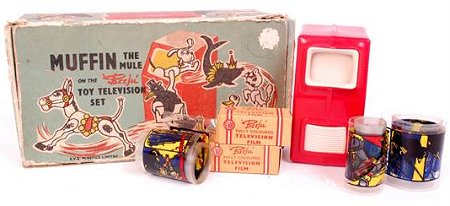
It wasn't until after the war that the British toy purchasing public caught the TV tie-in bug. The market had already been very well tested. As with The Lone Ranger series in the USA, the children of Great Britain had their own radio hero. Dick Barton - Special Agent (1946 - 51) was the star of the BBC's first radio serial. With over 15 million listeners tuning in to hear his adventures every week, it wasn't long before toy companies jumped on the Barton bandwagon to produce related comics and toys. The same year as Dick Barton bebuted on radio, television, after a break between the war years (1939 - 46) returned. For the Children was the show that introduced youngsters, at least those few fortunate enough to have a television in 1946, to a wooden mule named Muffin. The puppet had originally been made in 1933 by Ann Hogarth, a leading British puppeteer who, with her husband, founded Hogarth Puppets. Muffin the Mule appeared on television with scripts by Ann Hogarth and was presented by Annette Mills. It became an instant hit with children. As a result, a number of companies approached Hogarth and Mills seeking the opportunity to market a variety of goods to tie-in with the puppet, but, as inconceivable as it seems now, asked the two ladies to pay them for the privilege. Fortunately, Hogarth and Mills had the foresight to refuse these offers and formed "The Muffin Syndicate Ltd" which would take care of all commercial products. The first item produced, copyrighted in 1948, but not released until late 1950 ("Just in time for Christmas" according to an advert in Television Weekly), was by E.V.B. Plastics of Surrey and was a small plastic television in which 'film strips' could be displayed a frame at a time in a back-lit screen using a special key. Presumably, the child or their parent would then make up their own story as they turned the pictures. Other popular toys were a diecast figure of Muffin made by Moko, a company that eventually changed its name to Lesney and later still to Matchbox, and a wooden version made by Pelham Puppets.
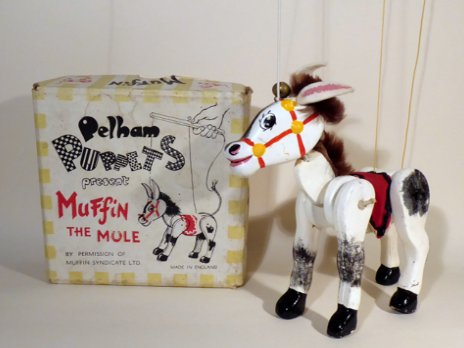
In November 1950, the BBC launched a Saturday afternoon children's show called Whirligig, the very first children's programme to be broadcast live from the BBC studios in Lime Grove. Although the series didn't appear each week (it alternated with another children's programme: Telescope), it introduced a number of characters that soon became popular with young children, such as Hank the Cowboy and Mr. Turnip. Both Hank and Mr. Turnip lead figures were soon produced (followed by a stringed Mr. Turnip puppet - but this came along later). Andy Pandy, who appeared in Watch with Mother, became another children's toy - manufactured by Sacul, which was established in 1951 by a Mr. Lucas (the company name being Lucas spelled backwards), a former employee of Timpo Toys Ltd. (the title derived from Toy Importers which is how the company started), who made hollowcast metal toys - mainly of military figures. However, Sacul went out of business in 1955 making their television tie-in toys quite scarce and very collectable.
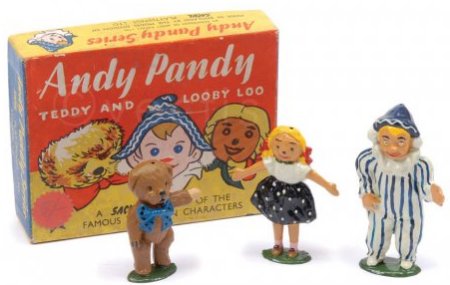
By now television was gaining ground as a popular form of entertainment. But slowly. Then in 1953 that all changed. When the BBC announced they were to broadcast the Coronation of Queen Elizabeth II the British public clamoured to buy television sets. As it turned out fifty-six per cent of the population watched the Coronation on TV - 20,400,000 viewers. It now came to the attention of many people within the expanding TV industry that with more sales of TV sets there would be more demand for longer broadcasting hours, more variety of programmes, and a second channel.
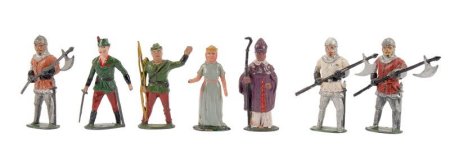
Two days after ITV launched in 1955, The Adventures of Robin Hood starring former 20th Century Fox star Richard Greene was broadcast. Greene had enjoyed minor success in Hollywood and was at one time being touted as a rival to MGM star Robert Taylor. But his career in Hollywood never reached the heights he had hoped for and Greene had returned to his native England in pursuit of a major role. The Adventures of Robin Hood very quickly established Greene as a household name. The series was aimed at older children and was full of adventure, intrigue, sword play and derring-do. Toy producers were quick to capitalize on the show's popularity, especially those manufacturers who specialised in figures of soldiers. Benbros Toys who were based in Walthamstow, London, had already dipped their toes into the television tie-in market, of sorts, in 1954 when they launched a range of miniature models under the name 'T.V. Series'. Each model was packed in a box representing a 1950s television set. The name of the model was printed on the TV screen of each box. However, the toys themselves bore no resemblance to any television show but instead included a range of farm vehicles such as a hay-cart, timber caravan and a gipsy caravan. Nevertheless, Benbros was one of the first to release an ITV tie-in toy with its ten miniature hollow-cast figures of Robin Hood characters (that also included a stag). Another set of figures also became available through Kellogg's which was a set of plastic self-coloured figures that were found in boxes of their Robin Hood promotion breakfast cereals.
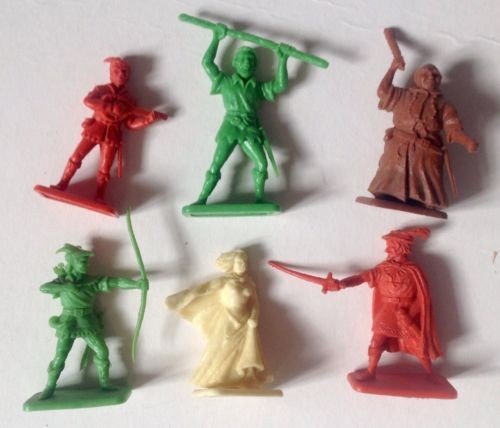
As other television programmes became popular, so more and more TV tie-in toys were manufactured. Whilst British television-related toys such as a pair of Pinky and Perky stringed puppets by Pelham Toys were big sellers, so too were toys related to a number of American television shows. Not all these shows were made for children. ITV were at that time broadcasting a number of successful prime-time Western series such as Wagon Train and Bonanza - adult series with a strong appeal for children. And this too was reflected in the TV tie-in toy market. But in 1957 a new television series aimed squarely at children appeared on the ITV network. And although nobody realised it in those early days, The Adventures of Twizzle would be the catalyst for perhaps the most successful range of TV tie-in toys of the next decade.
Next: Part 2
Article: Laurence Marcus (April 2019)
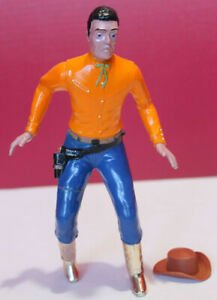
Bonanza Toy
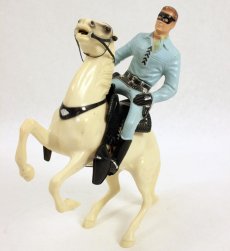
A typical 1950s Lone Ranger toy
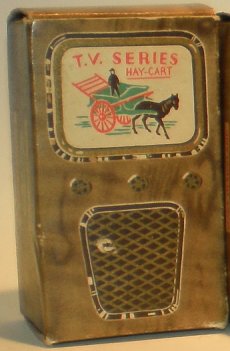
A Benbros 'T.V. Series' box - it had nothing to do with TV
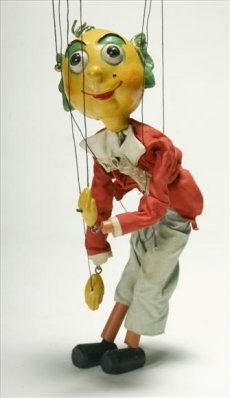
Pelham's Mr. Turnip
